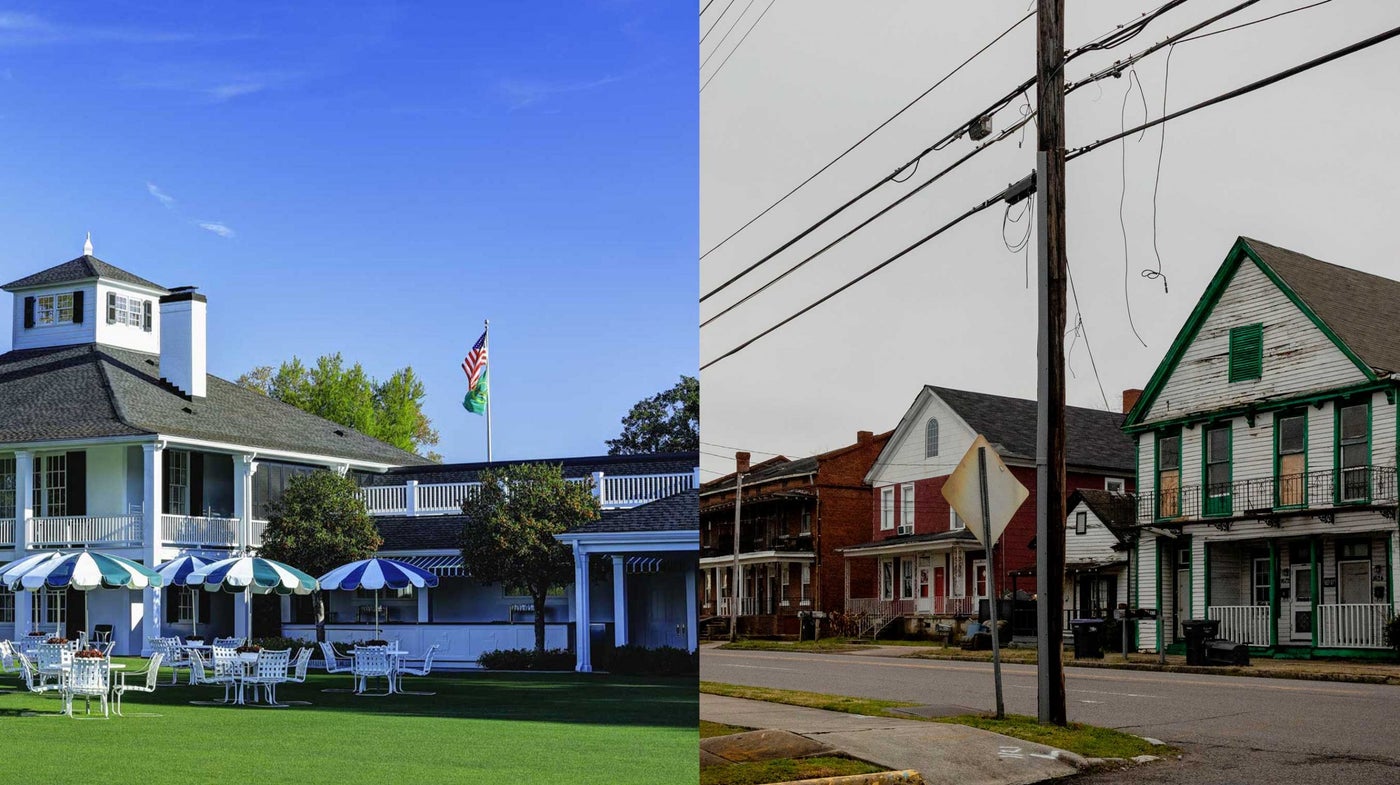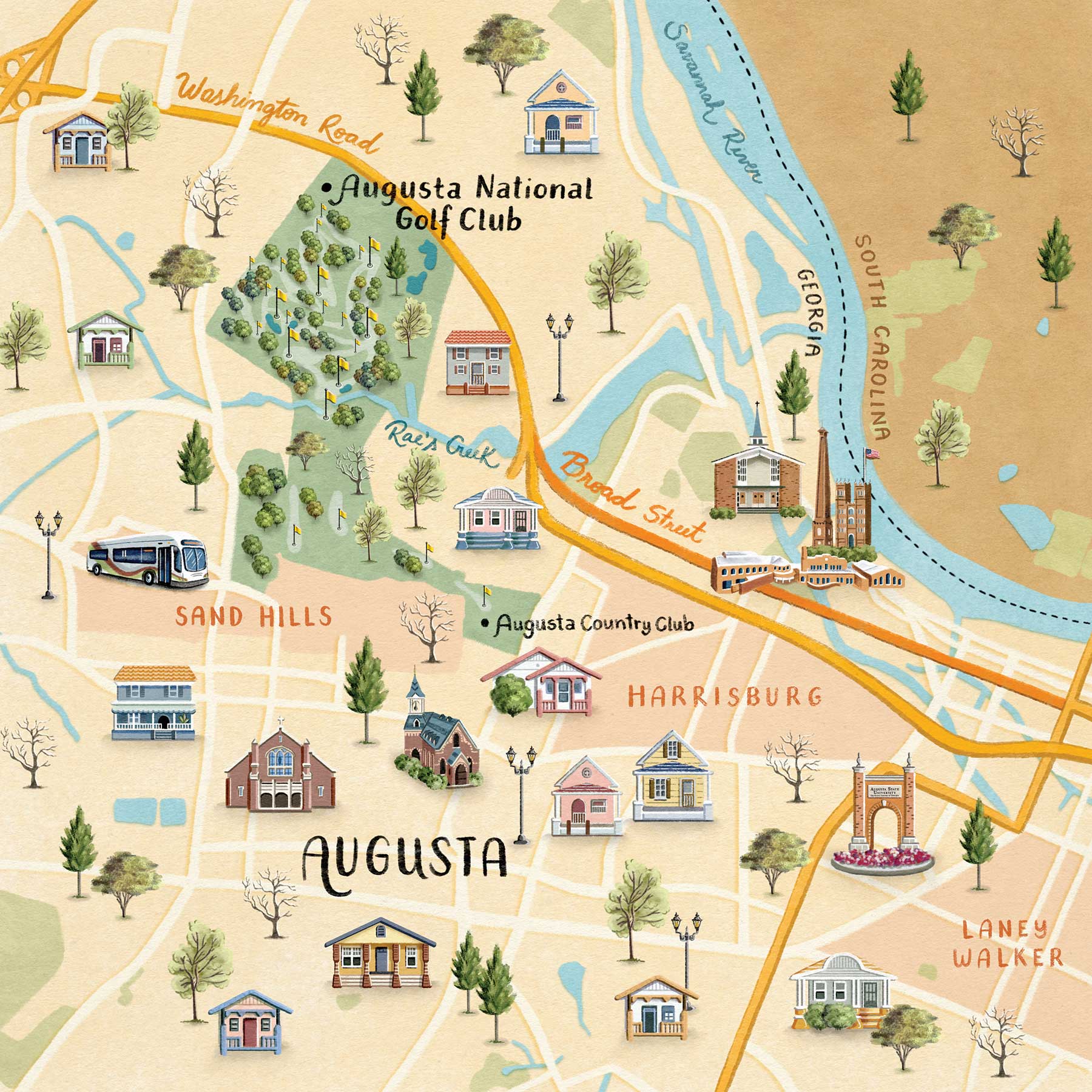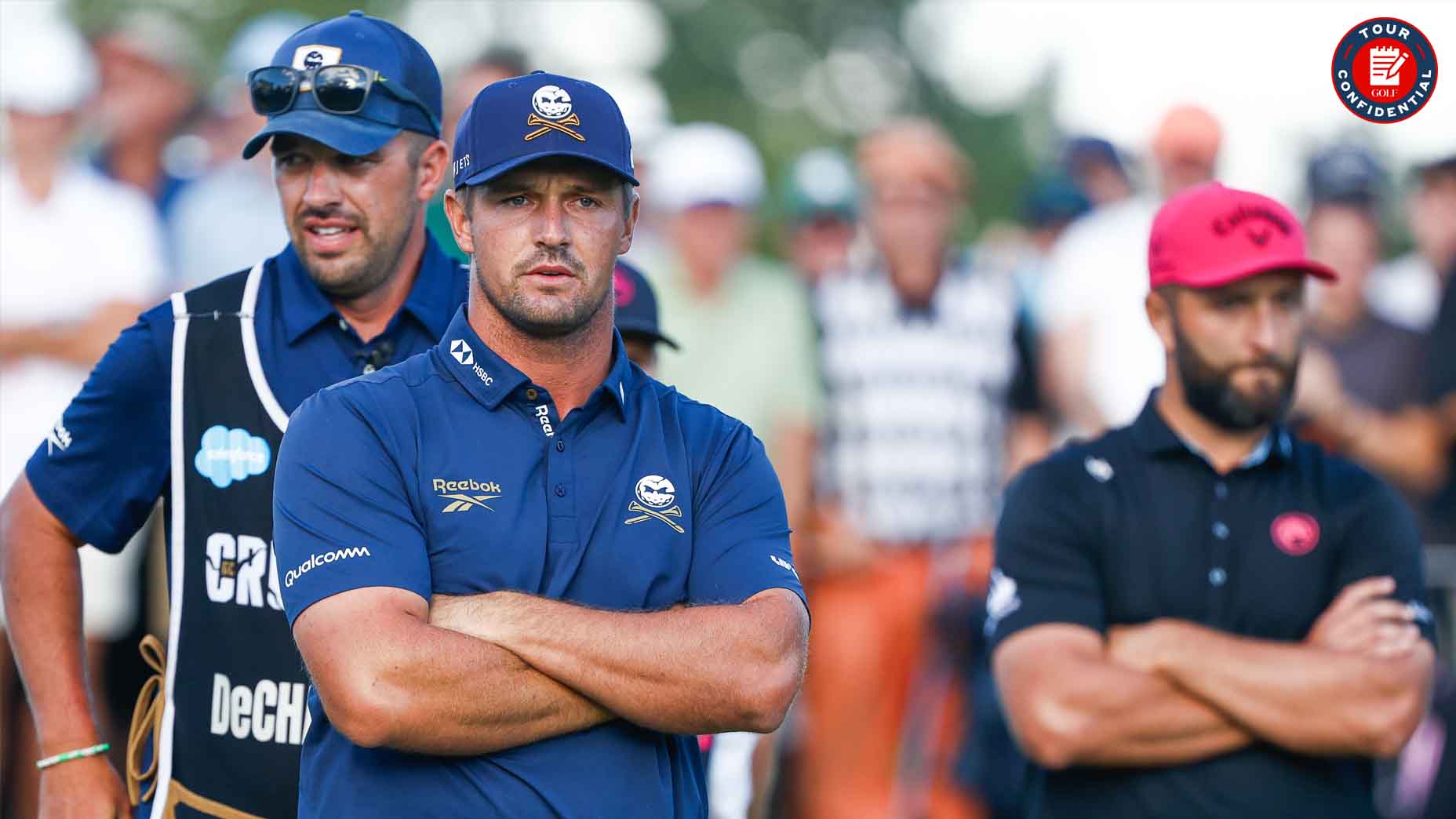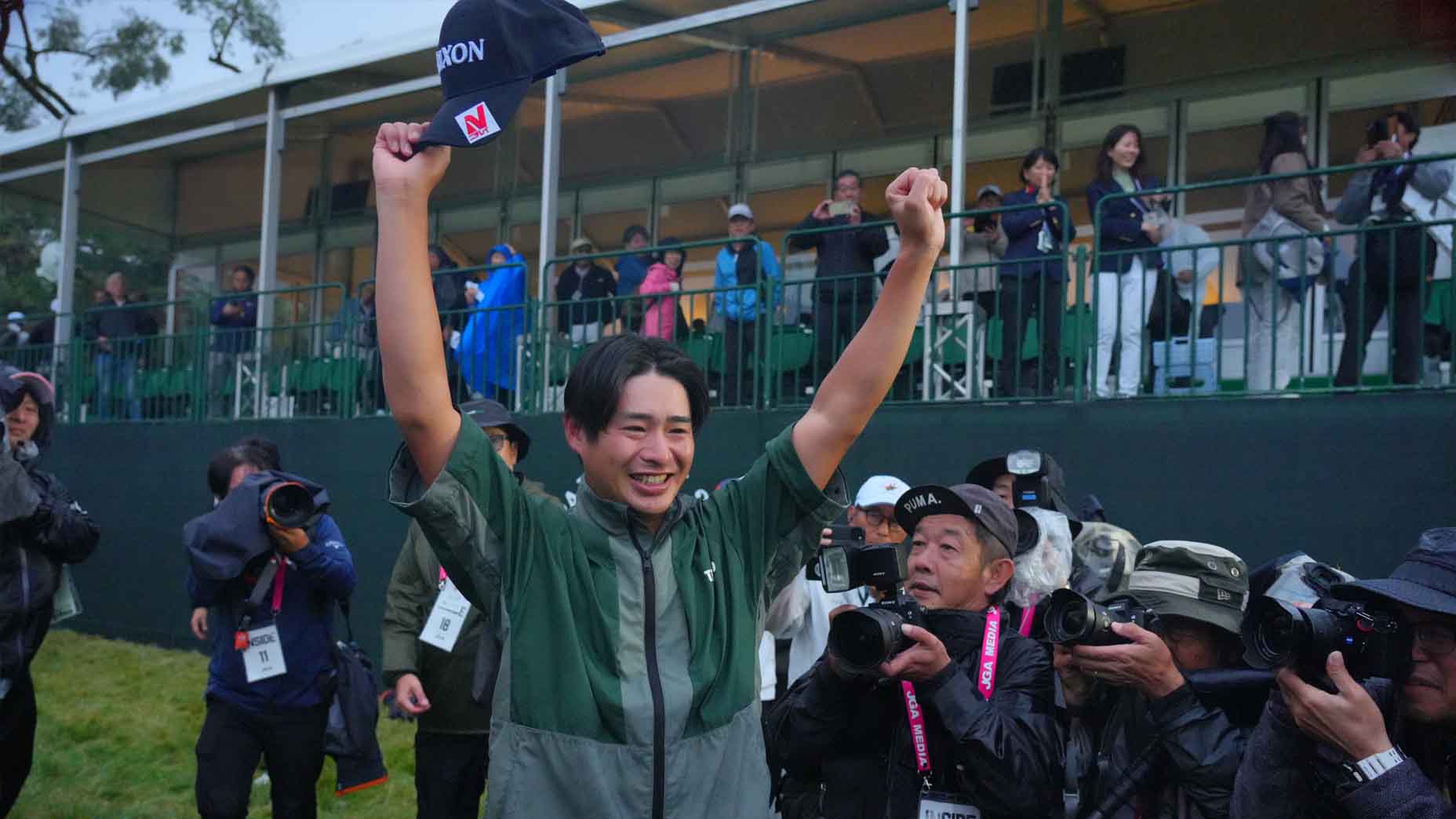On a Saturday afternoon in December, 11 days after the death of a well-liked Augusta National caddie named Freddie Robertson, relatives and friends, from the club and the neighborhood, gathered for visitation at C.A. Reid, a funeral home in Laney Walker, an old Black section of downtown Augusta. The next morning, two dozen or so people congregated at a cemetery in a far hillier part of Augusta, the city where Mr. Robertson had lived all his life. He was buried wearing his white caddie jumpsuit, green club hat and plastic name tag. He was 64.
“He loved caddying,” Mr. Robertson’s grown daughter, July Little, said recently. Her father lived in a small white house he rented on Broad Street in Harrisburg, another old Augusta neighborhood, once an enclave of white mill workers, though that was in a different time.
Mr. Robertson didn’t drive, so his fellow caddies often gave him a lift to the course. When they couldn’t, he’d take the 5, an Augusta Public Transit bus. He’d be on the bus as Broad Street morphed into Washington Road where it crossed over Rae’s Creek. On the course, members and guests got a kick watching Freddie as he ran to distant greens, ahead of the golfers in his group, to clean their golf balls and repair their ball marks. Freddie Robertson, in the best tradition of his profession, sought to leave the course in better condition than he found it, but his daughter doesn’t cling to a romanticized, Bagger Vance view of her father’s work. “He loved the money,” she told me.
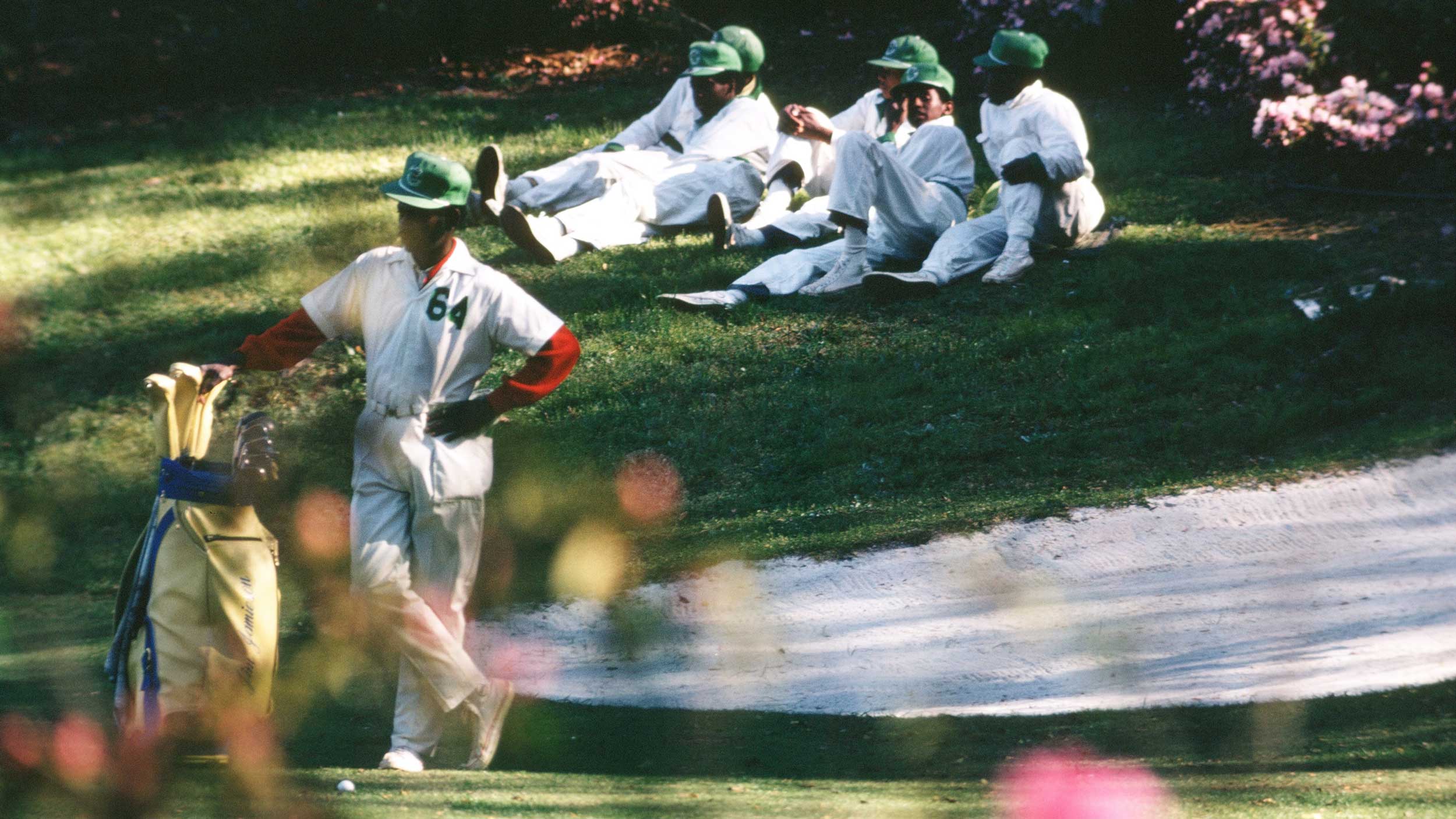
It didn’t take long for July, who works at a daycare center on Laney Walker Boulevard, to go through her father’s belongings. The most impressive thing he left behind was a set of golf clubs. If you’re a caddie at Augusta National, and you play, you’re going to wind up with some brand-name sticks, sometimes as hand-me-downs from members eager to share their good fortune.
There’s a lot of that at Augusta National, as there is at other old-line clubs: members showing an almost paternal warmth to those who serve them. It’s a two-way street. Loyal employees bring joy to the lives of members. They remind members of their status. They trigger feelings of gratitude. Overtures from members are often modest — a green-coated man might slip into the clubhouse kitchen to say thank you now and again — but the underlying intensity is unmistakable. It was in this spirit that a member took care of Mr. Robertson’s funeral costs. In that same spirit, the club and its membership have, without fanfare, bestowed many gifts throughout Augusta over the years. To whom much is given, etc.
And then came 2020, when the word unrest started trending aggressively.
On a Wednesday in mid-November, at the delayed Masters, the club showed it was ready to put more skin in the game than it ever had before, and to do so more publicly. That was when Fred Ridley, the Augusta National chairman, announced that the club, along with its corporate partners, would be making a major housing, health and education commitment to Augusta’s Harrisburg and Laney Walker neighborhoods. This was not another club nod toward “grow the game,” noble though those efforts have been. This was a pledge to give hundreds of millions of dollars, likely over the course of a decade, to inject new life into two hurting neighborhoods. This was, and is, a pledge in the name of repair.
As Ridley spoke at his annual press conference, an artist’s rendering was projected on a press building wall and now the world could see the future Boys & Girls Club of downtown Augusta. It was a streetscape, a dreamscape — and an X-ray of the chairman’s soul.


“Fred bought in to what this project could do for the community,” Kim Evans said recently. She is the CEO of the greater Augusta Boys & Girls Clubs. “He believes in social responsibility. He cares about people. He’s attuned. This is Augusta National making a statement.”

Evans watched Ridley’s press conference from home. She knew what was coming. Still, when the news was set loose, she and her husband hugged. Her cellphone started dancing with incoming calls and texts. The many painful episodes of 2020 — the virus racing across the world, a series of violent Black deaths at the hands of police officers, the acrimony surrounding the presidential election — raised the stakes and the meaning.
Leon Maben is a retired small-business owner who lives in his childhood home in Laney Walker. He used to hear the men in his father’s barbershop speak of Augusta National in a derisive way, back in the 1950s and ’60s and into the ’70s. He heard about Ridley’s press conference and summed up what the club’s leadership was doing with a preacher’s ease: “They had their come-to-Jesus moment.”
Forgive him for not throwing a party. He’s 68 and he lived through the deadly 1970 Augusta race riots. He knows Augusta National didn’t invite a Black golfer to the Masters until 1975 and didn’t get its first Black member until 1990. Maben, like others in Laney Walker, recognizes that the club is making a serious commitment. But he’s viewing it through a long and murky prism. Talking to Maben, a board member and tour guide at the Lucy Craft Laney Museum, is a powerful reminder: We see what we want.

Lee Ann Caldwell, a historian at Augusta University, has devoted her professional and personal life to understanding her hometown’s racial, social and economic history. As she has taught her students for generations, those three ropes are entwined, sometimes violently so.
There might be no person in Augusta with a deeper sense of what the city is all about than Dr. Caldwell. (She spent hours giving history lessons to me.) She’s an active member of a variety of local civic groups, and she recalls standing by her car in a parking lot recently, talking to an Augusta National member, a well-heeled, do-the-right-thing Augustan, about the complex roots of their city’s problems for a half hour. “I thought he was trying to understand,” Dr. Caldwell said. Every aspect of this thing is a work in progress.
Augusta is a jumble. It’s a human and geographic maze. Rae’s Creek flows into Lake Olmstead, which feeds the Augusta Canal and the Savannah River. You can’t tell the story of Tiger’s win at the 2019 Masters without mentioning Rae’s Creek (the moat that guards the 12th green), and you can’t write the history of Augusta without referring to the Augusta Canal, which powered the Confederate Powder Works. Its redbrick obelisk chimney still stands today, 150 feet high, the tallest structure, by far, in Harrisburg. The Salvation Army Kroc Center, a massive, gleaming fitness center that Augusta National supports, is across the canal from this Washington Monument of a chimney.
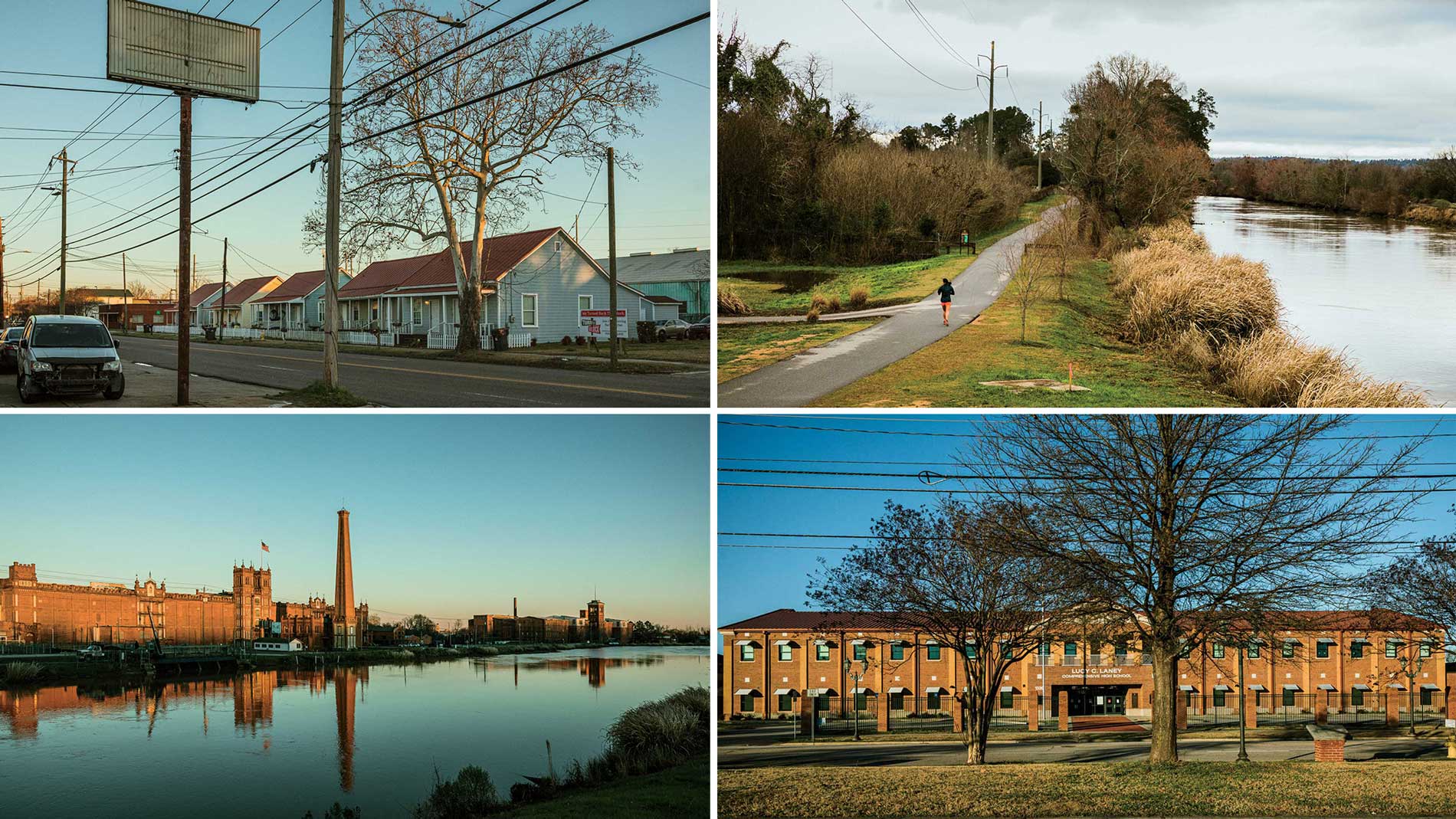
On the five-mile drive from the downtown Marriott to Augusta National, with just minor detours, you’ll pass Augusta University, growing and prospering, and its various affiliated medical centers. You’ll see decaying shotgun shacks in Harrisburg, along with other houses being rehabbed. In Laney Walker, where Freddie Robertson went to high school and played football, you’ll see weedy vacant lots ready for development and gleaming hospital exteriors. Throughout downtown Augusta, you’ll see every kind of church and every kind of bar. They’re interesting.
The House of Transition and Transformation in Harrisburg is a redbrick storefront church on Broad Street, about two blocks from where Mr. Robertson lived. By all appearances, it hasn’t been open for a while. But appearances can be deceiving, and who among us can say what the future will bring?
There are still old-time Augustans who remember Harrisburg as white, working-class, vibrant and self-contained. But then robotics came in, and textile manufacturing migrated from Harrisburg and the Deep South to China and Vietnam. Harrisburg has not recovered. Not yet, anyway.
Augusta is a jumble. It’s a human and geographic maze.
Jim Dent, born and raised in Augusta and nearly 82, can readily recall Harrisburg in its heyday. The lodge brothers called him “Big Boy” in his long journeyman’s PGA Tour career, his apprenticeship to becoming a Champions tour star. He grew up in the Sand Hills section of Augusta, as did many celebrated Augusta loopers, including Carl Jackson, Ben Crenshaw’s main man. Dent caddied as a kid, first at the Augusta Country Club, later at Augusta National. He described his commute to work: “We’d walk from the house to the Country Club, walk across the course, get on to the National back by the 13th tee and go straight up the hill on 18 to the clubhouse.”
Young Jim Dent went to Laney High and Paine College — Black schools in Laney Walker — and shot pool in a white pool hall in Harrisburg. “You went in through the back door and you didn’t go alone,” Dent said. Dent had what the homeboys wanted, the caddie money in his pocket. When he was feeling frisky and rich, he’d get waffles in Harrisburg on his way home, eating quickly.
One of his sons, Jim Dent Jr., is the head pro at the Augusta Municipal Golf Course, known locally as The Patch. (As Augusta National has Magnolia Lane, The Patch has Jim Dent Drive.) Another son, Joseph Dent, caddies some at Augusta National. “There aren’t too many Black caddies there anymore,” the senior Dent said. “Used to be 100 percent Black. Now it’s maybe 15.”

The original Augusta-Augusta National marriage began in 1931, when local men, shovels in hand, began turning a celebrated nursery into an iconic golf course. Over the club’s first 50 or 60 years, nearly all of its caddies, waiters, bartenders and drivers were Black men from Augusta, and most of the housekeepers were Black women from Augusta.
That was still the case when I went to Augusta National for the first time as an overnight guest nearly 30 years ago. It felt like I had walked into a time machine, with the dial set to 1934. In 2008, I spent part of an afternoon interviewing an elderly man named Rayford Wigfall, who waited on Cliff Roberts, one of the club’s cofounders, from October to May, when the club was open and its chairman was in residence. In Wigfall’s era, many of the employees had to hustle to find summertime work in a city that didn’t have much of it. Some worked for members. Some collected unemployment. Some went hunting and fishing, and not as weekend sport. Freddie Robertson cut grass.
But Augusta the club has changed in recent decades, as has Augusta the city. In 1996, the city of Augusta and Richmond County merged politically, making Augusta the county seat. The combined population is 200,000, with a small but growing Asian and Hispanic population. The club now has close to 500 employees, many of whom work all year. The club’s workforce has never been more racially or geographically diverse. The employees come from throughout the Central Savannah River Area, which extends across the river from downtown Augusta and into South Carolina. There are likely far fewer employees from downtown than there once were. But (once more, with feeling) who among us can say what the future will bring?
Shell Knox Berry runs the CSRA’s Community Foundation, a gathering place for a variety of local nonprofit groups. The foundation’s office is in the heart of downtown Augusta. One of Berry’s cousins is Jeff Knox, the Augusta National member who has often played at the Masters as a noncompeting marker. Berry is not a golfer. She’s never met Fred Ridley. But nobody I interviewed had a richer idea of what this new Augusta National-Augusta marriage can mean than Berry.

She can see a day when downtown Augusta will actually have its own Starbucks and, far more meaningfully, its own supermarket. Also, community vegetable gardens, thriving schools, new cybersecurity companies (a growing business in greater Augusta). More trees, less crime, more affordable health-care clinics. Rehabbed houses and new housing throughout Harrisburg and Laney Walker. She can see the whole thing. The new downtown Boys & Girls Club is more than an artist’s future rendering to her. She can see the kids in it.
Berry also knows there’s no magic wand here that Augusta National can simply wave. “This is not Oz,” she said. She’s learned how poverty can take root in a bloodline like a cancer. But she has seen how Tom Cousins and smart philanthropy remade East Lake in Atlanta, both the golf course there and its surrounding neighborhood. She knows what’s possible. “Augusta National,” she said, “doesn’t do anything halfway.”
One of Freddie Robertson’s regulars was a man named David Novak. Novak grew up in trailer parks and became a successful fast-food executive. A couple weeks after Mr. Robertson’s funeral, Novak posted this tweet: “Freddie Robertson, the hardest worker and the best caddie in the world, recently passed in his sleep at age 64. The caddies at the club sent me this framed picture of Freddie because they know how close we were. Like Freddie said, ‘Two peas in the pod.’ The gift moved me to tears.” The black-and-white photo shows Mr. Robertson in his caddie jumpsuit, wearing his club hat, his plastic name tag attached to it, above his left ear. His smile is beatific.
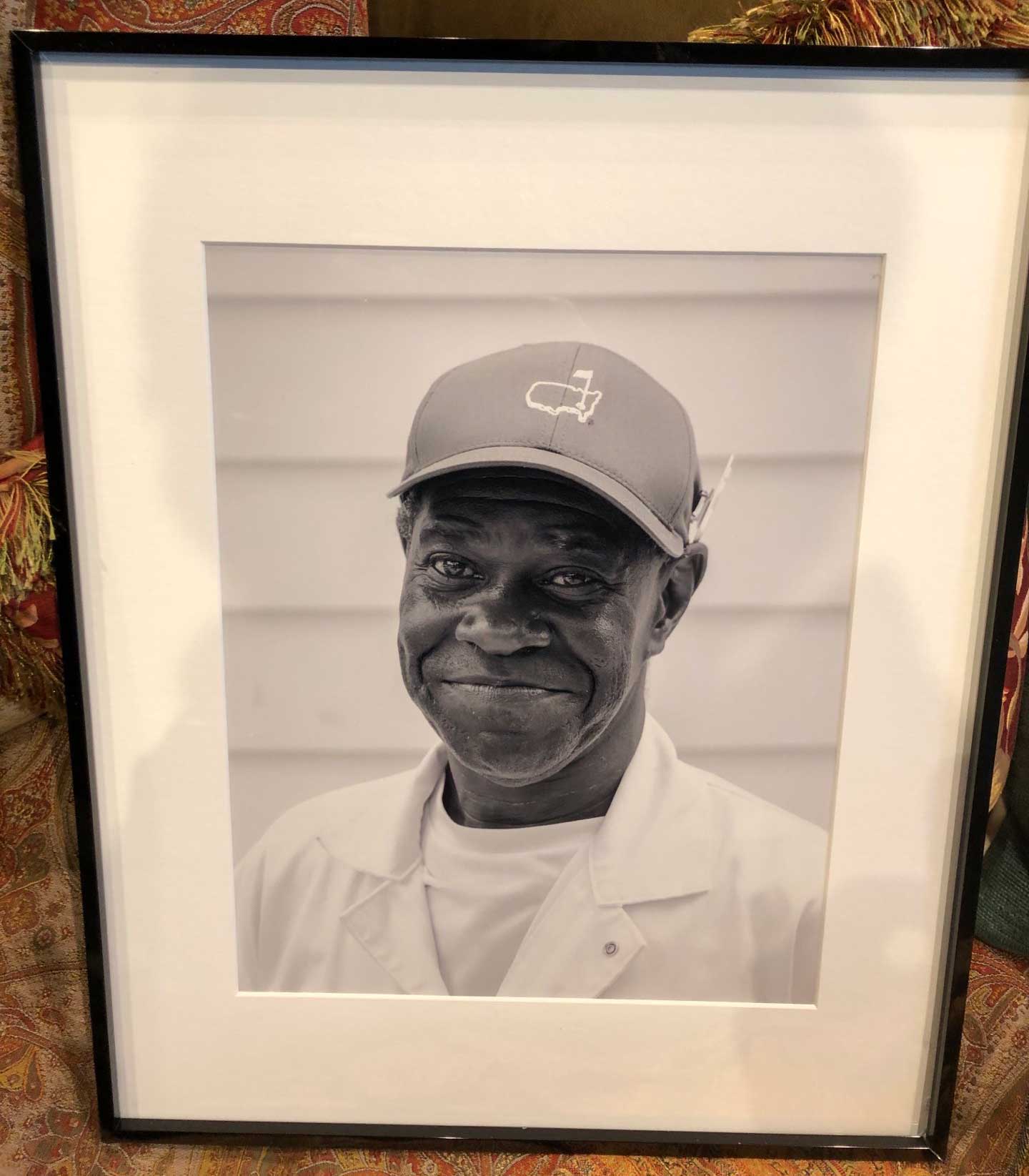
It’s astounding to think how quickly the golf experience at Augusta National can bring two people together, as it did repeatedly with Novak and Mr. Robertson. Tom Cousins, a longtime Augusta National member, told me about being the only white person at the Augusta funeral of his regular Augusta caddie, Sammy Tankersley. When Fred Ridley played in his first Masters in 1976, as the reigning U.S. Amateur champion, his caddie, Shag Brigham, was a Black man from downtown Augusta. Ridley missed the cut. But he played the first round with Jack Nicklaus, and he tried to figure out how Nicklaus was able to identify Ridley’s girlfriend (now his wife) among the thousands of spectators walking with them. He played his first nine holes in 36, only one shot more than the defending champion. Shag Brigham was there, beside Fred Ridley, for all of that. A link that will last forever. A short but meaningful partnership between the son of an educator from small-town Florida and a caddie from downtown Augusta.
Death revealed the trauma in Freddie Robertson’s life. The coroner’s report listed his cause of death as “Cocaine toxicity complicating hypertensive heart disease.” Two of Mr. Robertson’s sons, July Little said, could not attend their father’s funeral because they were in prison. Her father’s estate was in his checking account and his wallet. At Augusta National, he ran to those famous greens and fixed ball marks and everybody smiled. But his life in Harrisburg was something else entirely.
Little has heard bits and pieces about what Augusta National plans to do, to try to improve Laney Walker, where she works, and Harrisburg, where her father lived and died. She thinks it’s good. She thinks things are looking up. Spring is coming.
Augusta doesn’t do anything halfway.
When Tom Cousins set out to revitalize East Lake 25 years ago he didn’t know he was starting a national movement called Purpose Built Communities. (His golf friends Warren Buffet and Julian Robertson run it with him.) Well, this unprecedented Augusta National-downtown Augusta effort is a marriage with a purpose. Today, East Lake, the club, is a living memorial to Bobby Jones, who grew up playing there and was a founder of Augusta National. East Lake the neighborhood has better schools, more home ownership, safer streets, a healthier citizenry.
Now Fred Ridley, a real-estate lawyer, is looking to build something that can outlast all of us. Tom Cousins, a real-estate developer himself, could not be prouder of his golf club for making a major commitment that has nothing to do with golf, not directly. As a much younger man, Cousins played golf with Arnold Palmer and Jack Nicklaus and Gary Player. But these things, he said, are now his Big Three: “Housing, education and health.”
In November, Ridley spoke of “the unrest that we have witnessed throughout our country.” Incredible. Most people come through the gates at Augusta National looking to escape unrest. Ridley, in his own way, was taking a different stand. It’s a brand-new day. Ridley was saying something that had never been said before, not by a chairman of a golf club: we’re all in this together.
Ridley said, “Although we strive to meet our duty and obligation to give back to the community that has given us so much, the past six months prompted us to reflect and ask ourselves the question: What more can we do to move our city forward?”
Our city.
Michael Bamberger welcomes your comments at Michael.Bamberger@Golf.com
